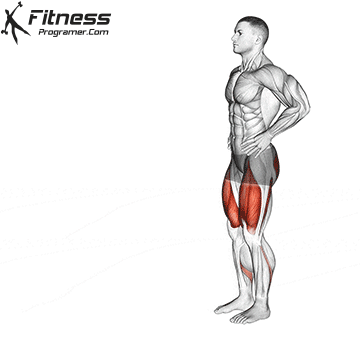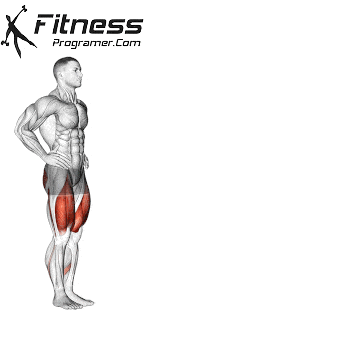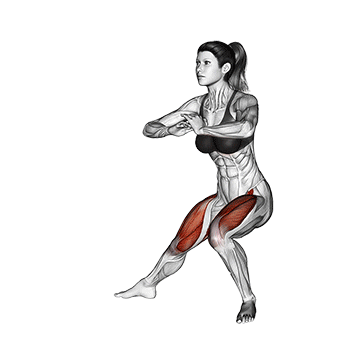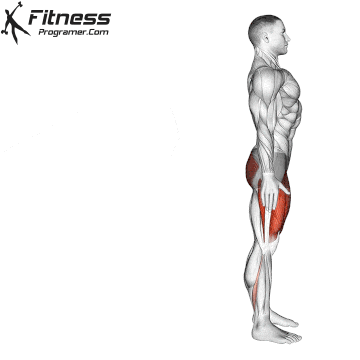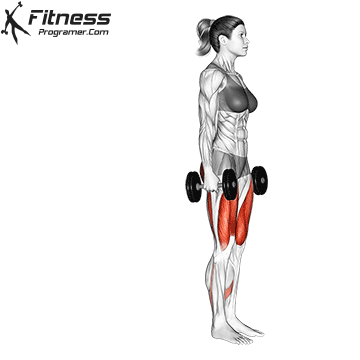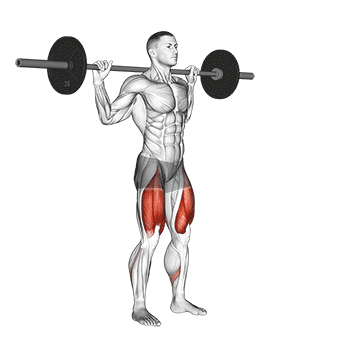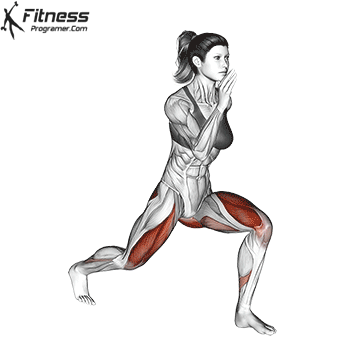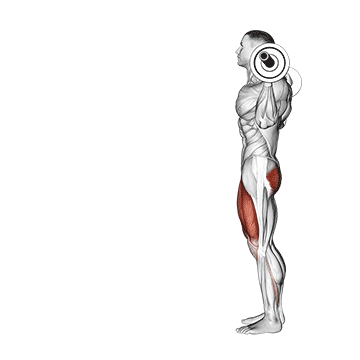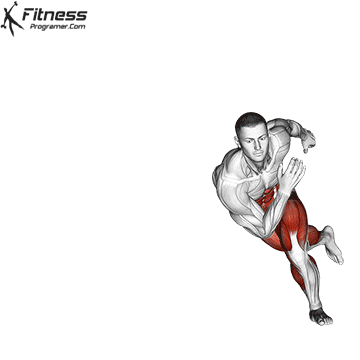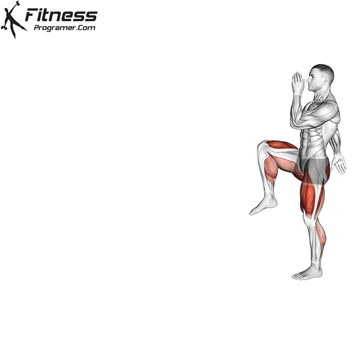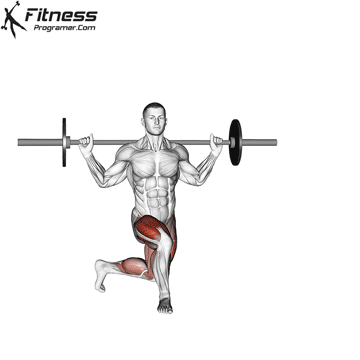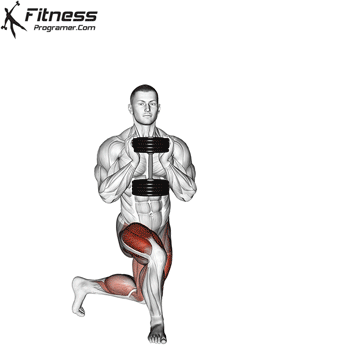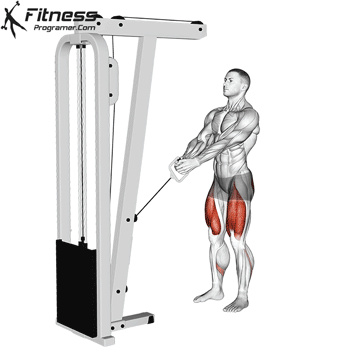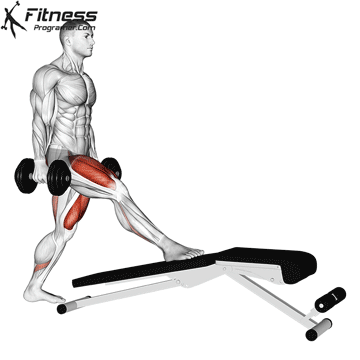Power Lunge
Power lunges are a dynamic high-intensity exercise that can help increase leg strength, explosive power and agility. They are often included in workouts aimed at enhancing athletic performance, such as in sports like basketball, soccer, and track and field. Additionally, power lunges can be incorporated into various fitness routines, including HIIT (High-Intensity Interval Training) workouts, to increase cardiovascular fitness and lower-body strength.
How to do
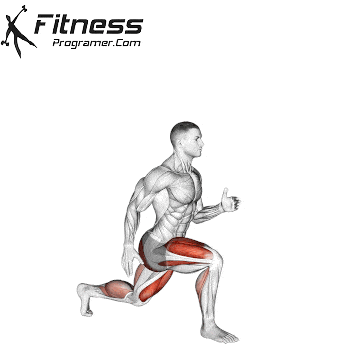
Starting Position:
- Stand with your feet hip-width apart.
- Keep your hands on your hips or at your sides for balance.
Lunge Position:
- Bend both knees to create a lunge position.
- Take a long step back with your right foot.
- Your left knee should be at a 90-degree angle, with your thigh parallel to the ground.
- Keep your core engaged, chest up, and back straight.
Jumping Phase:
- From the lowered lunge position, explode into the air using the strength of your left leg.
- As you jump, lift your right knee as high as possible toward your chest.
- Use your arms for balance and momentum if needed.
Landing:
- Land softly on the ground with your left foot, returning to the begin position.
- Ensure that you land with a slight bend in your left knee to absorb the impact and reduce stress on your joints.
Repeat on the Other Leg:
- Immediately after landing, switch your legs, so your right foot is forward and your left foot is behind you.
- Repeat the same sequence: lunge down, jump up, and bring your left knee towards your chest.
Repetitions and Sets:
- You can perform a specific number of repetitions on each leg (e.g., 10 on each leg) or time yourself (e.g., 15 seconds on each leg) based on your fitness level and goals.
Benefits of Power Lunges
Increased Leg Strength: Power lunges target the major leg muscles, including the quadriceps, hamstrings, glutes, and calf muscles. This helps to build strength in these muscle groups, which can enhance overall lower body strength and stability.
Explosive Power: The explosive jump element of power lunges focuses on developing power in the legs. This can be particularly beneficial for athletes in sports like basketball, volleyball, and track and field, where explosive leg power is crucial.
Cardiovascular Conditioning: The fast-paced nature of power lunges and the inclusion of jumping make this exercise an effective cardiovascular workout. It raises your heart rate, improves endurance, and burns calories.
Agility and Coordination: The quick and controlled nature of the movements in power lunges can help improve agility and coordination, which can be advantageous in various sports and activities.This can improve your ability to change direction quickly, an important skill in many sports and activities.
Functional Fitness: The movements in power lunges mimic real-life actions like stepping and jumping, making them valuable for functional fitness and improving daily activities.
Fast fat loss: Because power lunges engage multiple muscle groups and involve explosive movements, they can contribute to calorie burning, making them useful for those looking to manage their weight.
Power Lunge Muscles Worked
Power lunges primarily target the muscles of the lower body, including the quadriceps, glutes, hamstrings, and calves. Here’s a breakdown of the muscles worked during power lunges:

- Quadriceps: The quadriceps are the muscles located at the front of your thigh. They are heavily engaged when you lower your body into a lunge position and push explosively off the ground during the jump.
- Hamstrings: The hamstrings are the muscles at the back of your thigh. They are involved in both the lowering phase and the explosive jump phase of the power lunge.
- Gluteus Maximus: The glutes, particularly the gluteus maximus (the largest glute muscle), are worked when you push yourself upward during the jump and maintain an upright position during the lunge.
- Calf Muscles: The calf muscles, including the gastrocnemius and soleus, are activated when you push off the ground during the jump and when you land softly.
- Hip Flexors: The hip flexor muscles, including the iliopsoas, are engaged when you lift your knee towards your chest during the jump phase.
- Core Muscles: Your core muscles, including the rectus abdominis (front), obliques (sides), and transverse abdominis (deep core), play a role in maintaining balance and stability throughout the movement.
- Adductors: The inner thigh muscles, known as the adductors, are involved in maintaining proper leg alignment during the lunge.
- Erector Spinae: The erector spinae muscles in the lower back provide support to maintain an upright posture during power lunges.
By incorporating power lunges into your workout routine, you can effectively target and strengthen these muscle groups, enhancing your lower body strength, explosive power, and overall athletic performance. Remember to use proper form and technique to maximize the benefits of the exercise while minimizing the risk of injury.
Power Lunge Variations
You can customize them in numerous ways to tailor your workouts to your specific needs. These variations encompass reverse lunges, lateral lunges, curtsy lunges, jumping lunges, and an array of others. By integrating these diverse forms, you not only target various muscle groups but also infuse your workouts with engaging diversity.

